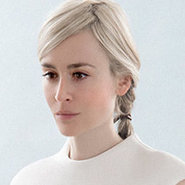- About
- Subscribe Now
- New York,
April 6, 2015

 Ana Andjelic is a strategist focused on global luxury and fashion brands
Ana Andjelic is a strategist focused on global luxury and fashion brands
By Ana Andjelic
Ice marathons in the Antarctic. UNESCO-site tours in Croatia. Swimming with hammerhead sharks. Today’s rich would rather spend their energy and money doing things than acquiring them.
This “being” versus “having” MO firmly places modern luxury in the domain of identity. Things we do shape who we are, the lifestyle we lead and the choices we make. They are our personal weltanschauung.
Consumption moves from opulent to meaningful
According to a 2014 Boston Consulting Group report, $460 billion was spent on unique travel adventures, compared to $170 billion spent on personal luxury goods.
Hunting for a unique experience makes us unique, much more than owning a material good does. Traditional luxury goods may be reflections of our identity, but experiential luxury purchases are our identity.
Psychology is firmly on the modern riches side.
Not only experience brings humans more happiness than possessions, research claims, but it also makes others more interested in what we have to say.
Simply put, our friends would rather hear about that ice marathon we ran more than about yet another pair of Louboutins we bought.
Luxury’s shift to experiences as a domain of personal identity, cultural capital and social currency has been noticed.
Smart brands have been quick to claim a spot in the luxury sector that is now diversified beyond fashion, watches or jewelry. In fact, $10,000 bicycles are all the rage among affluent consumers on the West Coast, just as SoulCycle is on the East Coast.
Wellness and healthy lifestyle belong to the new luxury, along with the small joys and treats such as enjoying a cup of a really delicious coffee.
A recent New York Times article ventured further, claiming that silence is the ultimate luxury, something with which a lot of us can agree.
“Luxury is anything that feels special,” said Aerin Lauder, founder of her eponymous lifestyle label and cosmetics legend Estée Lauder’s granddaughter.
“It can be a moment, it can be a walk on the beach, it could be a kiss from your child or, it could be a beautiful picture frame, a special fragrance,” she said. “I think that luxury doesn’t necessarily have to mean expensive.”
This relentless pursuit of the personal quality of life is about individuality.
Brand you
Think collaborations between Neil Young and Supreme, Joni Mitchell and Saint Laurent or Joan Didion and Celine. Both Ms. Didion and Celine are acquired tastes, aimed at those in the know.
Celine and Ms. Didion’s collaboration unmistakably conveys the identity not only of Celine – and Ms. Didion, for that matter – but of those who choose to buy that point-of-view.
Identity is what distinguishes marketing of luxury brands versus marketing of premium and mass brands.
Instead of comparing themselves with competitors and touting their advantages over them, best luxury marketing revolves around the particular experience that brings brand identity to life.
This experience is sometimes forged around the company’s founder, as is the case with Chanel.
Other times, it is expressed via brand beliefs, as is the case with Louis Vuitton’s art collaborations with Murakami, the Coppolas and its recent Series venture.
Retail experience often successfully expresses brand identity as well.
A flagship, such as Burberry’s, Apple’s or Warby Parker’s, becomes a tangible expression of the things that a brand stands for and creates a consumption ritual, which enforces cultural identity of both the brand and its consumers.
Luxury brands have for too long operated as predominantly commercial entities, fiercely focused on their own efficiency, cost cutting and bottom line. This business strategy made a many of them neglect who they are, what they stand for and the role they play in culture.
Such an approach also makes many luxury brands nearly indistinguishable from one another.
Now, with the experiential luxury sector consistently outperforming other sectors of luxury goods, luxury brands are challenged to become purveyors of self-expression and lifestyle. They cannot compete based on their product offerings alone.
This is even more true, knowing that luxury consumers now are faced with a supermarket of choices, diffuse information and the fact that a quick Google search turns luxury into commodity.
MODERN LUXURY is rife with complexity.
This complexity comes from the increasingly experiential nature of luxury consumption, from the runway – think the Zoolander cameo at the recent Maison Valentino show in Paris – to digital to retail stores.
Experiences are interlinked with identity, self-expression and lifestyle.
To master the transition from a traditional luxury brand to a contemporary luxury experience, modern luxury companies need to successfully manage all of them.
Ana Andjelic is a New York-based strategist focused on global luxury and fashion brands. Reach her at andjelicaaa@gmail.com.
Share your thoughts. Click here